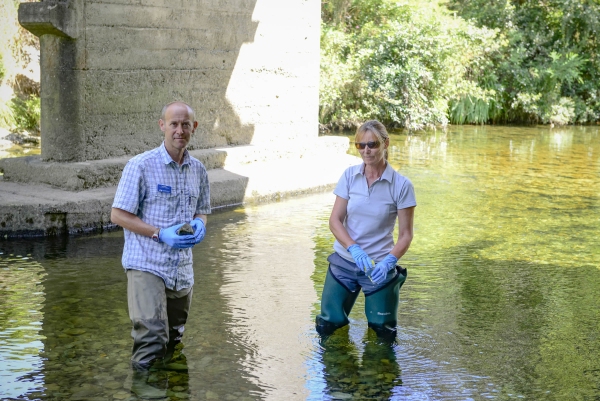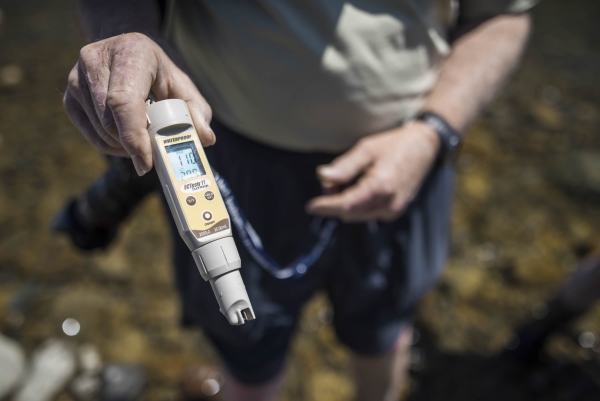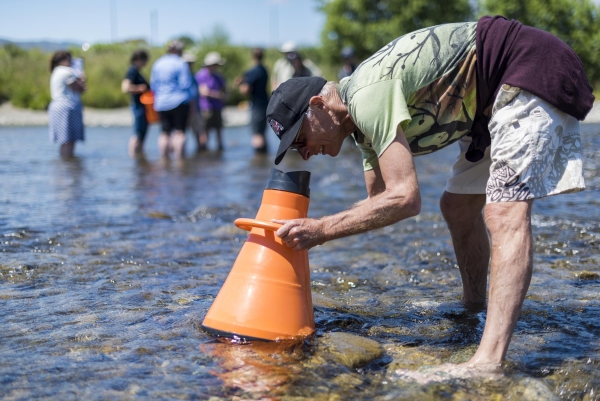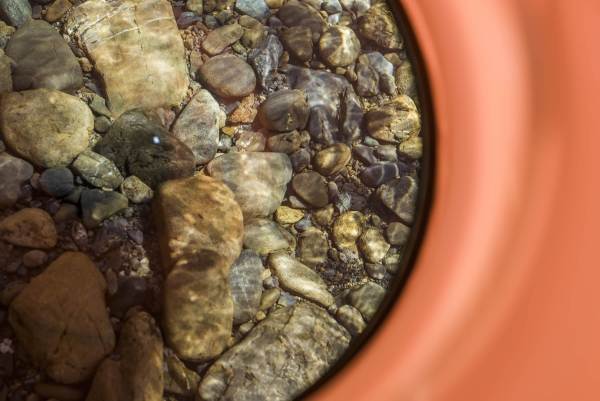The first Wednesday of the month finds Philippa Eberlein and her Friends of the Maitai colleagues collecting samples from the Maitai River in Nelson.
It’s a monthly routine she has held since 2014 when she answered an advertisement, placed by Friends of the Maitai in the newspaper, seeking ‘citizen science volunteers’ to help with a project organised by NIWA.
With a background in ecology and microbiology, the UK expat is a perfect volunteer for the role and recently attended a NIWA-sponsored freshwater science conference in Hamilton to extend her knowledge base on water monitoring.
“I hadn’t worked in the science field for a while when I read the advertisement. The Maitai is right on my doorstep and I was very interested in the role. We use NIWA-provided kits to measure various parameters including clarity, conductivity, dissolved oxygen, pH, temperature, nitrates and phosphates.
We also look at the periphyton and take a water sample to look at the E. coli concentration. The sample is filtered, placed on a nutrient gel and incubated overnight. Then the colonies are counted. There are two sites that we do every month and two other sites that we monitor quarterly or as we think necessary,” says Eberlein.
The information is collated and provided to the Nelson City Council annually to include in its database. The collaboration between the Friends of the Maitai, Council, and NIWA is helping provide a robust picture of the river’s health with community monitoring data used alongside Council water quality monitoring data.
“I have just completed a project with Paul Fisher at Nelson City Council comparing three different E. coli kits for ease of use and accuracy compared to the results of professional labs that can be used in the community. We achieved generally consistent results at low concentrations, which was encouraging. Where there were higher levels, we needed to dilute the sample,” Eberlein says.
Comparatively, the Maitai is cleaner than many of New Zealand’s rivers but Ms Eberlein says this can change dramatically following significant rainfall or nearby logging activity. The Nelson City Council’s River and Stream Health Annual Monitoring Summary 2015/16 rated the Maitai at Riverside as ‘C’ (Moderate). The Riverside site was monitored by the community group in parallel with the Council State of Environment programme.
“The more you participate, the more interesting the monitoring becomes and more challenges we find. Having returned from the freshwater science conference and listened to several presentations on macroinvertebrates, I was inspired to do another survey of our sites and discovered an abundance of mayflies and caddisflies and no snails or worms, which is good,” says Eberlein.
“I’m now looking at sediment samples to compare the E. coli levels in the water. This will involve some experimentation with extracting the E. coli from the sediment before filtering.
NIWA is fantastic to work with. The team is always very helpful and quick to respond to questions and giving advice.”
Visit: Friends of the Maitai




